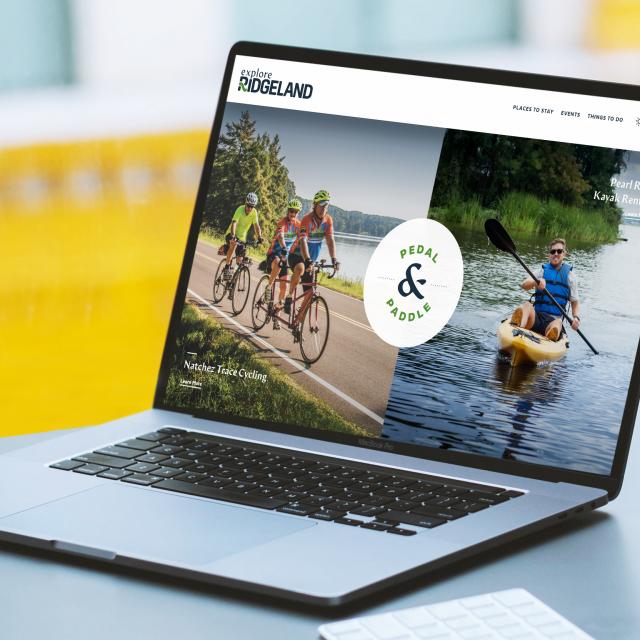Understanding New ADA Accessibility Standards for DMO Websites

Learn more about the new DOJ ruling regarding website accessibility and how it could potentially impact requirements for destination organization websites.
In a significant step towards digital inclusivity and to ensure an equitable online experience, the Department of Justice (DOJ) recently issued a ruling mandating that all public websites and mobile apps must comply with Title II of the Americans with Disabilities Act (ADA). At Tempest, we are proud to be ahead of the curve, already ensuring that the websites we design for destination organizations are accessible to everyone. This includes the over 61 million adults in the United States living with a disability, which is just a fraction of the over 1 billion prospective destination visitors worldwide with disabilities.
Here’s how Tempest’s commitment to accessibility aligns with the new DOJ ruling and what it means for your organization.
Overview of the DOJ Ruling
On April 24, 2024, the DOJ mandated that state and local government websites and mobile apps adhere to the Web Content Accessibility Guidelines (WCAG) 2.1, Level AA. This ruling establishes clear technical standards to ensure digital content is accessible to individuals with disabilities. It underscores the importance of providing accessible communication and ensuring equal access to online services.
Impacted Organizations
The ruling applies to all state and local government websites and mobile applications. These entities must ensure their digital content meets the specified accessibility standards to provide equal access to all users, including those with disabilities.
Depending on how your organization is funded and structured, you might not fall under the new DOJ ruling. Examples of entities typically classified as state and local government agencies include:
- Offices providing benefits or social services like food assistance, health insurance, or employment services
- Public educational institutions, including schools, community colleges, and universities
- Police departments
- Courts
- Elections offices
- Public hospitals and healthcare clinics
- Parks and recreation programs
- Libraries
- Transit agencies
However, prioritizing accessibility is crucial for every destination organization, regardless of if you are impacted by the recent ruling.
Effective Date
Organizations have up to two or three years to comply with the new ruling, depending upon the population of your state or local government. Your population can be determined by reviewing 2020 U.S. Census data.
Special district governments, or governments representing under 50,000 individuals, have until April 26, 2027 to comply with the ruling. Larger government organizations, representing greater than 50,000 individuals, have only until April 26, 2026 to comply.
For more information on the DOJ ruling, visit the DOJ Fact Sheet.
How Tempest Ensures Website Accessibility
Website accessibility has always been paramount to Tempest. We firmly believe that in order to be an effective ambassador and steward for a destination, it is your duty to create and distribute helpful content and information that is accessible to all. This belief has been woven into the fabric of our company’s DNA, and is central to our approach to destination websites.
Adherence to WCAG Standards
Tempest designs and develops websites that comply with WCAG 2.1, Level AA standards as a priority. This ensures that all users, regardless of ability, can access and interact with the digital content created and published by your organization.
Further, all modern Tempest websites are built upon the versatile Craft CMS — the same CMS platform chosen by the World Wide Web Consortium (W3C; the organization responsible for the WCAG 2.1 standards) for their website needs.
Key Accessibility Features & Design Considerations in Tempest Websites
Tempest has long maintained accessibility standards in our website development and design processes. As we continue to develop new, helpful tools for our destination websites — such as enhanced partner listing sections or engaging mapping solutions — we do so with accessibility considerations in mind. Here are a few other ways Tempest website’s equip destinations with the tools necessary for optimal digital accessibility:
- Keyboard Navigability: Websites are designed for easy navigation without a mouse.
- Screen Reader Compatibility: Our websites work seamlessly with screen readers.
- Image Alt Text: Every image includes the option to add descriptive text to support screen readers.
- High Contrast: Our designs ensure readability by keeping a sufficient contrast between the text and background colors.
- Customizable Layouts: Destinations can easily switch the alignment of text to avoid overlapping image focal points and keep content in areas of negative space.
- Accessible Fonts: Fonts on Tempest websites are clear, simple, and legible. We also aim to avoid overly decorative fonts whenever possible and ensure text size is appropriate for readability.
- Resizable Text: Text can easily be resized via browser tools without breaking the layout of a page, blog or other content. Users should be able to enlarge text up to 200% without loss of content or functionality using their browser.
- Image & Video Captions: To create a sense of place, destinations can easily add captions for videos and featured imagery.
- Efficient Sitemap Structure: Information architectures are created in a way that allows users to easily find content within well defined topical hubs.
Tempest websites also support third party integrations with accessibility tools, like UserWay, which can provide additional website customization for individuals with disabilities. While multifaceted and helpful, it is worth noting that these tools are not a singular solution and destination organizations should explore routine processes to ensure their website and its content are compliant with WCAG 2.1 AA standards.
Ongoing Accessibility Support
In addition to our standard website features that support accessible digital content, Tempest also offers Growth Marketing services that can help boost your website’s accessibility. While rooted in exploring opportunities to increase your website’s value and visibility via organic search, programmatic advertising, and other marketing methods, these services also include regular updates to content with accessibility considerations in mind, such as improving image alt text, or refining page layouts for optimal usability.
Tempest is dedicated to creating inclusive web environments for the destinations we support. Contact us today to learn more about how we can help your organization stay compliant and accessible, ensuring an equitable digital experience for all users.


